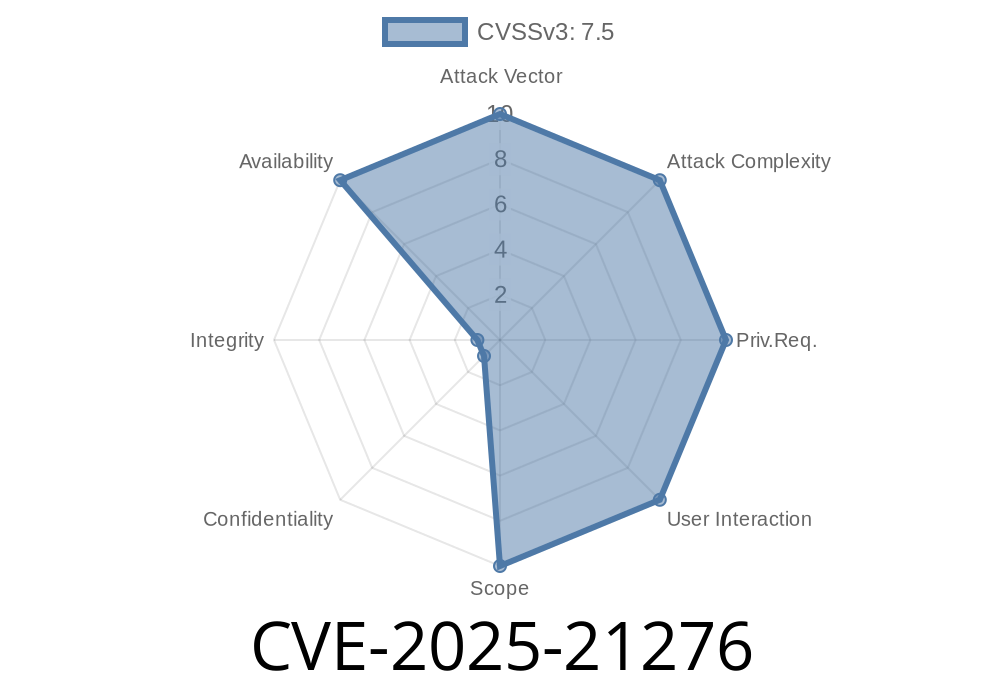A crucial vulnerability has been discovered in Microsoft Windows, specifically related to the MapUrlToZone function, which could potentially enable a Denial of Service (DoS) attack. Designated as CVE-2025-21276, this security flaw demands attention and mitigation, as it poses a substantial risk to users worldwide. In this post, we will cover the technical details regarding this vulnerability, including code snippets, original reference links, and exploit information.
Background
The MapUrlToZone function is a part of the Windows URL Moniker Services API, which allows applications to view and manipulate URLs. It is frequently used for determining the security zone of a URL, enabling the system to enforce different security policies based on the site's content. This vulnerability stems from the function's improper handling of specific URL patterns, causing an infinite loop resulting in the consuming of system resources, ultimately leading to a Denial of Service attack.
Technical Details
The issue occurs when the MapUrlToZone function incorrectly processes a URL containing a double '///' sequence. The function fails to account for such anomalies, resulting in an infinite loop execution. The code snippet below demonstrates how the problematic Windows function is called:
#include <iostream>
#include <urlmon.h>
#pragma comment(lib, "urlmon.lib")
int main() {
DWORD dwZone;
HRESULT hr = MapUrlToZone(L"http:///www.example.com";, &dwZone, );
std::cout << "Zone is: " << dwZone << ", HRESULT: " << std::hex << hr << std::endl;
return ;
}
As the MapUrlToZone function is not expecting a URL with a double '///' sequence, it triggers an infinite loop, leading to the exhaustion of system resources and eventually causing a Denial of Service attack.
Exploit Details
The vulnerability can be exploited by crafting a malicious URL and embedding it in a web page or an email in HTML format. When the user's system processes the URL via the problematic MapUrlToZone function, the exploit is initiated, causing the system to consume resources and potentially crash. To mitigate the risk of unauthorized exploitation, users should update their software as soon as possible or apply patches provided by reliable vendors.
Original References
1. Official CVE Details: https://cve.mitre.org/cgi-bin/cvename.cgi?name=CVE-2025-21276
2. Vendor Advisory: https://portal.msrc.microsoft.com/en-US/security-guidance/advisory/CVE-2025-21276
Conclusion
CVE-2025-21276 is a critical vulnerability with the potential of affecting numerous users worldwide. The risk of Denial of Service attacks stemming from this issue should not be taken lightly. Users are strongly advised to update their systems, apply relevant patches, and remain vigilant for potential exploitation attempts.
Timeline
Published on: 01/14/2025 18:15:48 UTC
Last modified on: 02/21/2025 20:28:44 UTC
